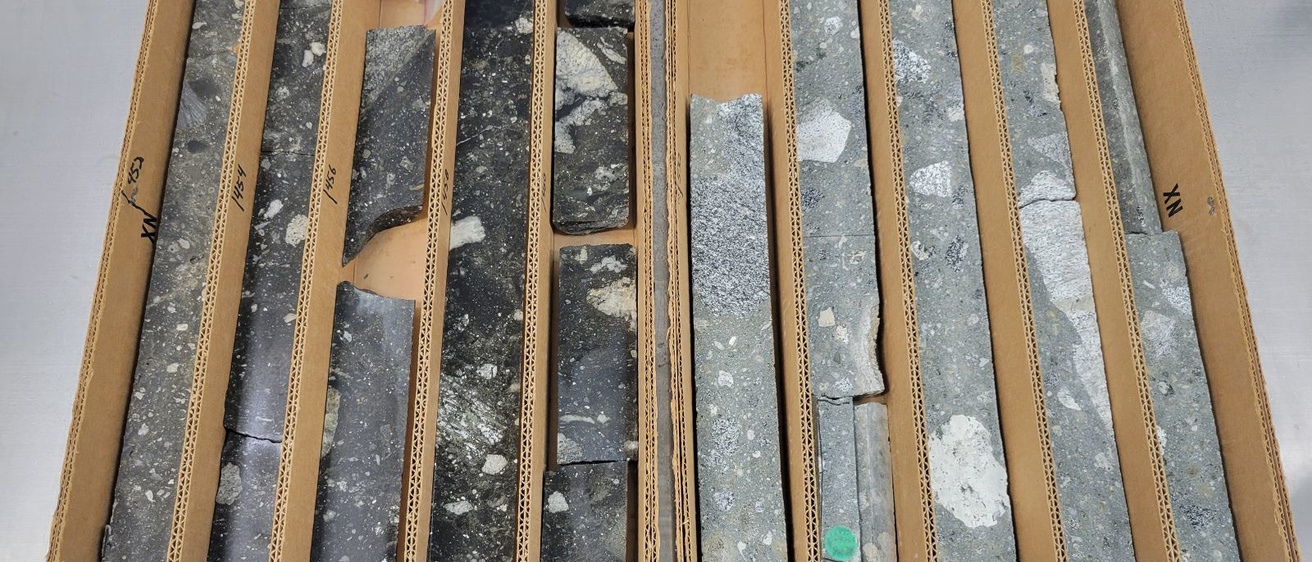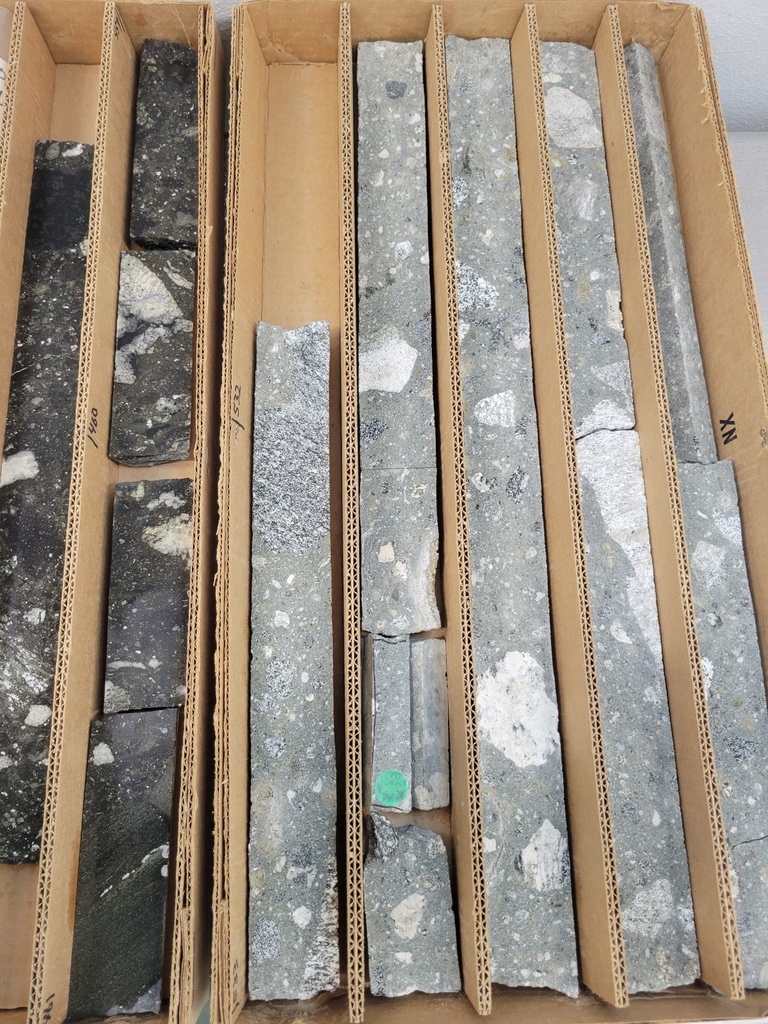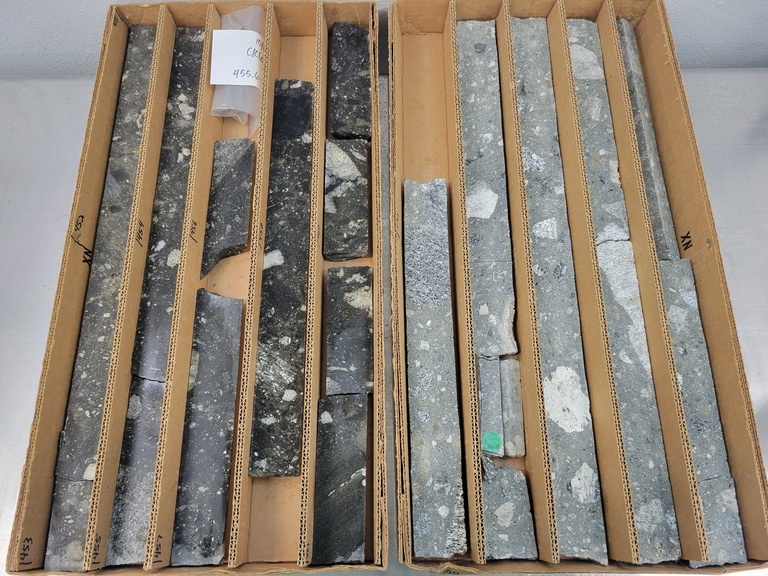Jack Malone, IGS Geologist
From being submerged beneath warm shallow seas teaming with marine life for more than 200 million years to being affected by the advance and retreat of multiple mile-thick ice sheets over the last 2.5 million years, Iowa’s geological past has been anything but stable. Even at this very moment while you are reading this, the landscape of Iowa is slowly changing. Evidence of how Iowa has evolved over Earth’s 4.6-billion-year history is preserved in the rocks. Geology operates on the premise that the physical, chemical, and biological laws that operate today also operated in the geologic past. The job of an IGS geologist is to study these rocks using a variety of tools and methods and from the data collected continue to reveal and refine our understanding of that history.
Establishing the lithology (physical characteristics) of a rock – including the minerals in the rock and, potentially, fossils within the rock if it is sedimentary – is only the first step. This, of course, allows a geologist to determine what the rock is and the conditions that created it. But by itself, a rock has little meaning unless it is placed within the appropriate context, determining its relationship with underlying and overlying rocks. There are two ways that IGS geologists establish the age of Iowa’s rocks – chronostratigraphy and geochronology. Very simply, chronostratigraphy is the study of the relative time and the relationships between rocks in a succession – the sequence in which events occurred during Earth’s history. Whereas geochronology uses radioactive isotopes to ascribe a numerical age to a particular rock.
There are numerous ways to determine the age of a rock, and a geologist may rely on a set of chronostratigraphic principles to determine the relative age of geological events. For example, let’s consider the town of Manson in north-central Iowa. During the early 20th century townsfolk noted the occurrence of naturally soft groundwater, however shallow well-cuttings revealed deformed Precambrian crystalline rocks and no Paleozoic sedimentary strata. This began the investigation of the Manson Structure. During the Late Cretaceous, approximately 74 million years ago, this part of Iowa was a shallow seaway and the site of a large meteor impact. The initial impact generated so much energy that more than 1,000 feet of Paleozoic rocks instantaneously vaporized forming a central peak of Precambrian crystalline basement rock surrounded by brecciated fragments of rock. The resulting structure is a complex impact crater that is 24 miles wide consisting of distinct concentric rings. During the last 2.5 million years, continental glaciers covered and eroded the Manson Impact Structure so that its surface expression is no longer visible. Before geologists began to radiometrically date the impact, field relations showed that the relative time that the crater formed was during the Late Cretaceous due to the disturbance of the underlying Paleozoic and Precambrian succession and the undisturbed Late Cretaceous and Quaternary sediments that subsequently buried the crater.
These lines of evidence were based on the stratigraphic principles of superposition and cross-cutting relationships. Ultimately, older rocks are overlain by successively younger rocks (superposition) and a disrupted pattern in a sedimentary succession is younger than the rocks that have been disturbed (cross-cutting relationship). Due to these chronostratigraphic relationships, it was thought that the Manson Impact may have been the cause for the Late Cretaceous mass extinction event (the death of the dinosaurs). Unfortunately, stratigraphic principles do not provide any numerical constraint for the exact timing of the Manson Impact.
However, IGS geologists identified mineral phases in the impact breccia melt that could be dated using radioactive isotopes (geochronologic proxies) to determine the absolute (or numerical) age of this meteor impact in Iowa. Radioisotope dating is based on the decay of a radioactive ‘parent’ element to a stable nonradioactive ‘daughter’ element. The half-life is the amount of time it takes for half of the parent element to decay to its daughter product, and for any radioisotopic system this number has been constrained and is constant over a given time span. Therefore, a given mineral and the appropriate radiometric chronometer can provide the numerical age for an event. As a result, the mineral sanidine was dated using 40Ar/39Ar and provided an age of 73.8 ± 0.3 million years for the Manson Impact Structure. The meteor impact that is now attributed to the extinction of the dinosaurs is dated at 66 million years ago, meaning the Manson Impact occurred nearly ten million years before the last dinosaurs roamed the Earth.
The field of geochronology, the methodology and technology used to determine numerical ages, has, and continues to evolve and advance. Now, geologists are using geochronologic proxies to identify the composition of magma melts, track the uplift of mountain belts, and determine the provenance or origin of sediments in a rock to infer paleodrainage patterns. With the continued advance of instrumental analysis methods and statistical integration, large datasets can be collected and modeled in a matter of minutes. And with the arrival of new techniques, legacy data must be re-examined once more to determine if the timing of events can be further constrained so we can continue to refine our knowledge of Earth’s past. After all, science only advances when new observations test the ideas of accepted expectations that move in the direction of greater accuracy and understanding.


